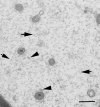Current application of neurofilaments in amyotrophic lateral sclerosis and future perspectives
- PMID: 33642372
- PMCID: PMC8343335
- DOI: 10.4103/1673-5374.308072
Current application of neurofilaments in amyotrophic lateral sclerosis and future perspectives
Abstract
Motor neuron disease includes a heterogeneous group of relentless progressive neurological disorders defined and characterized by the degeneration of motor neurons. Amyotrophic lateral sclerosis is the most common and aggressive form of motor neuron disease with no effective treatment so far. Unfortunately, diagnostic and prognostic biomarkers are lacking in clinical practice. Neurofilaments are fundamental structural components of the axons and neurofilament light chain and phosphorylated neurofilament heavy chain can be measured in both cerebrospinal fluid and serum. Neurofilament light chain and phosphorylated neurofilament heavy chain levels are elevated in amyotrophic lateral sclerosis, reflecting the extensive damage of motor neurons and axons. Hence, neurofilaments are now increasingly recognized as the most promising candidate biomarker in amyotrophic lateral sclerosis. The potential usefulness of neurofilaments regards various aspects, including diagnosis, prognosis, patient stratification in clinical trials and evaluation of treatment response. In this review paper, we review the body of literature about neurofilaments measurement in amyotrophic lateral sclerosis. We also discuss the open issues concerning the use of neurofilaments clinical practice, as no overall guideline exists to date; finally, we address the most recent evidence and future perspectives.
Keywords: amyotrophic lateral sclerosis; biomarkers; motor neuron disease; neurofilament light chain; phosphorylated neurofilament heavy chain.
Conflict of interest statement
None
Figures


References
-
- Agosta F, Ferraro PM, Riva N, Spinelli EG, Domi T, Carrera P, Copetti M, Falzone Y, Ferrari M, Lunetta C, Comi G, Falini A, Quattrini A, Filippi M. Structural and functional brain signatures of C9orf72 in motor neuron disease. Neurobiol Aging. 2017;57:206–219. - PubMed
-
- Altmann P, De Simoni D, Kaider A, Ludwig B, Rath J, Leutmezer F, Zimprich F, Hoeftberger R, Lunn MP, Heslegrave A, Berger T, Zetterberg H, Rommer PS. Increased serum neurofilament light chain concentration indicates poor outcome in Guillain-Barre syndrome. J Neuroinflammation. 2020;17:86. - PMC - PubMed
-
- Benatar M, Zhang L, Wang L, Granit V, Statland J, Barohn R, Swenson A, Ravits J, Jackson C, Burns TM, Trivedi J, Pioro EP, Caress J, Katz J, McCauley JL, Rademakers R, Malaspina A, Ostrow LW, Wuu J, Consortium CR. Validation of serum neurofilaments as prognostic and potential pharmacodynamic biomarkers for ALS. Neurology. 2020;95:e59–69. - PMC - PubMed
Publication types
LinkOut - more resources
Full Text Sources
Other Literature Sources

